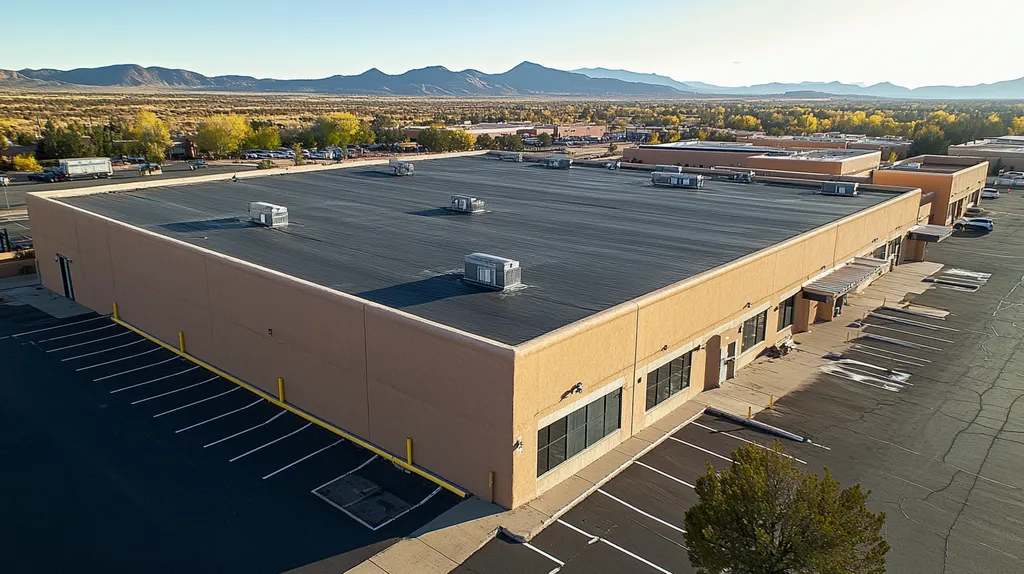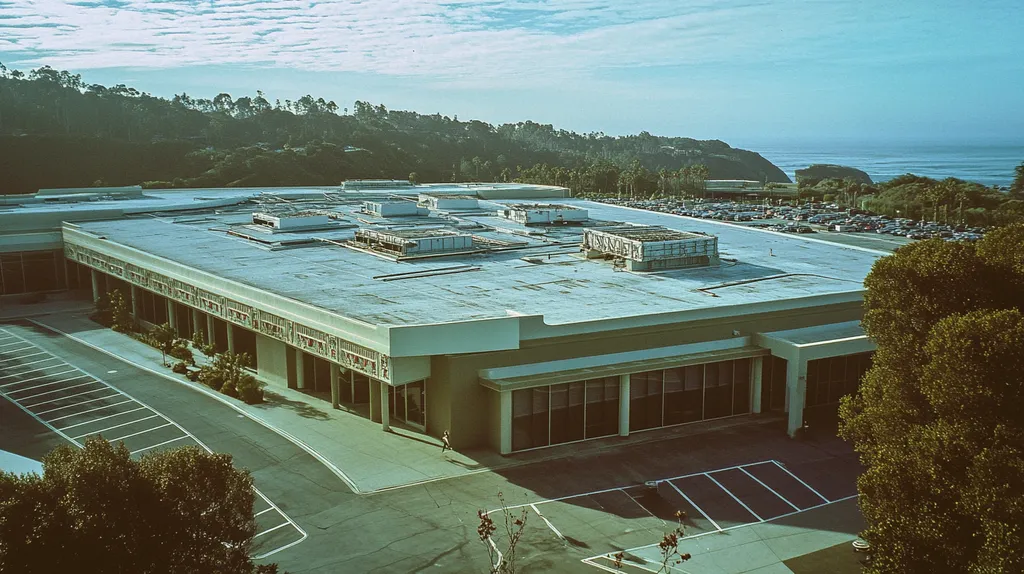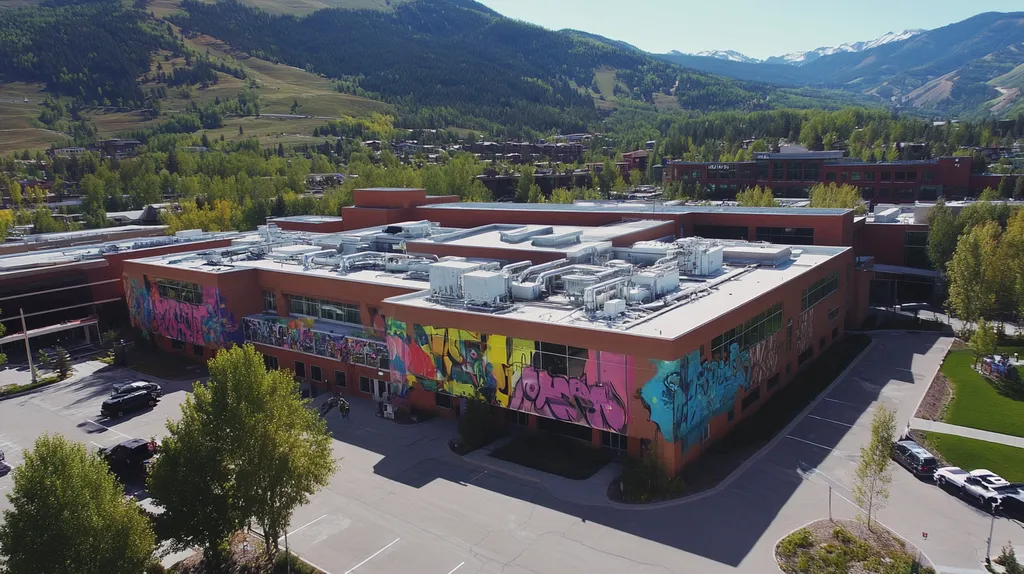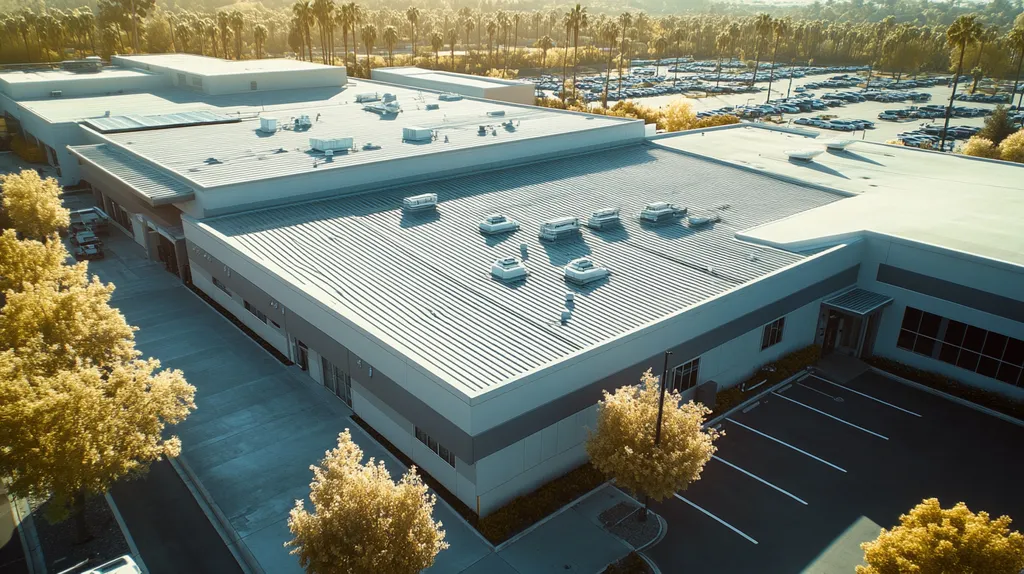Welcome to today’s Battle Royale featuring two roofing heavyweights: “Silicone Roof Coatings” in the east corner versus “Elastomeric Roof Coatings” in the west!
Tonight’s showdown pits these contenders against each other across six punishing rounds designed to test every aspect of their performance for Commercial Roof Coating.
At stake? Millions in potential costs, decades of building protection, and the critical performance demands of modern commercial and industrial facilities.
Our professional judging panel will evaluate each round on technical merit, real-world performance, and value delivery. After all six rounds, we’ll declare our ultimate champion.
Ladies and gentlemen, facility managers and building owners… it’s time to rumble!
ROUND 1: INITIAL COSTS & INSTALLATION
When evaluating commercial roof coatings, the initial investment and installation process can significantly impact both short-term budgets and long-term performance. Property managers face critical decisions that affect not only immediate costs but also future maintenance requirements and overall roof longevity.
A roof coating can provide a reliable roofing system while keeping installation costs manageable compared to full replacement. Understanding the distinctions between silicone and elastomeric options helps facility managers make informed decisions that align with their budgetary and performance requirements. (source: Tecta America)
Material Expenses
Material costs represent a substantial portion of any commercial roof coating project. Current market pricing shows silicone coatings commanding premium rates, often 30-40% higher than their elastomeric counterparts.
Silicone coatings justify their higher price point through superior durability and weather resistance. These materials typically require fewer gallons per square foot and maintain their protective properties longer than alternatives.
Elastomeric coatings appeal to budget-conscious buyers with their lower upfront costs. However, they often require additional materials for proper installation, including primers and multiple coating layers.
While both options provide effective protection, silicone’s superior longevity and reduced material requirements earn it the “ADVANTAGE” in this category.
Installation Complexity
Installation procedures directly impact project success and long-term performance. Silicone coatings require precise application conditions and specialized equipment, but create a seamless, monolithic membrane when properly installed.
Professional contractors can apply silicone coatings through spray systems or roller applications, with minimal surface preparation required. The single-coat application process reduces labor time and minimizes the risk of installation errors.
Elastomeric coatings typically demand extensive surface preparation and multiple coating layers. While the application process is straightforward, the multi-coat requirement increases both labor time and the potential for application mistakes.
Given its simpler application process and reduced labor requirements, silicone coating claims the “ADVANTAGE” for installation complexity.
Project Timeline
Project duration affects both facility operations and overall costs. Silicone coating installations typically require 2-3 days for completion on standard commercial roofs, with weather conditions being a critical factor.
The rapid curing time of silicone allows for same-day water resistance, reducing vulnerability to weather delays. However, specific temperature and humidity requirements can extend project timelines in challenging conditions.
Elastomeric coatings offer more flexible application windows but require longer curing times between multiple coats. The extended application process can stretch projects to 4-5 days under ideal conditions.
Due to their weather sensitivity and potential for delays, elastomeric coatings take the “ADVANTAGE” in project timeline considerations.
ROUND 1 WINNER: SILICONE ROOF COATINGS
ROUND 2: DURABILITY & LIFESPAN
When evaluating commercial roof coatings, durability and longevity directly impact both building protection and return on investment. Recent industry data shows that improper coating selection can reduce a roof’s functional lifespan by up to 40%, leading to premature replacement and unnecessary capital expenditure.
Understanding the performance characteristics of different coating options helps facility managers make choices that maximize protection while minimizing long-term costs. The environmental conditions, substrate material, and maintenance requirements all play crucial roles in determining coating longevity.
Weather Resistance
Environmental resistance represents the primary factor in coating longevity. Silicone coatings excel in this category, maintaining their protective properties even after decades of UV exposure and temperature cycling.
These coatings create a highly water-resistant barrier that prevents ponding water degradation. Their molecular structure remains stable through freeze-thaw cycles, helping prevent cracking and delamination.
Elastomeric coatings offer good initial weather resistance but can degrade more quickly under intense UV exposure. While they maintain flexibility, their water resistance may diminish over time, particularly in areas prone to ponding.
Given their superior long-term weather resistance, silicone coatings earn the “ADVANTAGE” in this category.
Physical Durability
Impact resistance and substrate adhesion determine a coating’s ability to maintain protection. Silicone coatings create a tough yet flexible membrane that resists physical damage while accommodating building movement.
Their excellent adhesion properties help prevent separation from the substrate, even under thermal stress. The single-coat application creates a seamless barrier with fewer potential failure points.
Elastomeric coatings provide good impact resistance but may require more frequent recoating to maintain their protective properties. Their multi-layer application can create additional interfaces where failure might occur.
Based on superior adhesion and fewer failure points, silicone coatings claim the “ADVANTAGE” for physical durability.
Environmental Impact
Modern coating solutions must balance performance with sustainability. Cool roof coatings significantly reduce energy consumption and manufacturing impacts compared to traditional roofing materials.
Silicone coatings typically require less material for effective coverage and maintain their reflective properties longer. Their extended lifespan means fewer replacement cycles and reduced waste generation over time.
Elastomeric coatings contribute to energy efficiency through their reflective properties. However, their shorter service life and higher material requirements can increase their overall environmental footprint. (source: Cool Roof Coating Systems)
With better longevity and reduced material needs, silicone coatings secure the “ADVANTAGE” in environmental impact.
ROUND 2 WINNER: Silicone Roof Coatings
ROUND 3: PERFORMANCE FACTORS
Commercial roof coating performance directly impacts building protection and operational costs. Recent data shows that inadequate coating selection can increase energy expenses by up to 30% while reducing roof life expectancy. Understanding key performance metrics helps facility managers select solutions that maximize protection while optimizing long-term value.
Weather Adaptability
Weather adaptability determines how effectively a coating maintains its protective properties across diverse conditions. Silicone coatings excel in extreme temperatures, maintaining flexibility from -40°F to 350°F without cracking or degrading.
These coatings create a waterproof membrane that prevents moisture infiltration even during extended rain exposure. Their molecular structure remains stable through freeze-thaw cycles, helping preserve roof integrity year-round.
Elastomeric coatings provide good initial weather resistance but can become brittle in extreme cold. While they offer decent protection in moderate climates, their performance may degrade more quickly in areas with dramatic temperature swings.
Given their superior performance across all weather conditions, silicone coatings earn the “ADVANTAGE” in this category.
Energy Efficiency
Modern roof coatings must balance protection with energy performance. Silicone coatings create a highly reflective surface that significantly reduces heat absorption, helping lower cooling costs throughout the building.
These coatings maintain their reflective properties for decades with minimal degradation. Their seamless application ensures consistent thermal performance across the entire roof surface.
Elastomeric coatings also provide good initial reflectivity but may require more frequent recoating to maintain energy benefits. Their multi-layer application can create thermal bridges that reduce overall efficiency.
With superior long-term reflective properties, silicone coatings claim the “ADVANTAGE” in energy efficiency.
Water Management
Effective water management prevents moisture damage while extending roof life. Silicone coatings create a monolithic membrane that efficiently channels water toward drainage points, preventing destructive ponding issues.
Their hydrophobic properties actively repel moisture while maintaining flexibility, ensuring consistent performance even in standing water. This self-cleaning characteristic helps preserve both appearance and functionality.
Commercial silicone roof coatings provide a cost-effective solution that delivers reliable waterproofing while reducing energy expenses through enhanced UV reflection. (source: Integrity Commercial Roof Systems)
Due to superior water resistance and self-cleaning properties, silicone coatings secure the “ADVANTAGE” in water management.
ROUND 3 WINNER: SILICONE ROOF COATINGS
ROUND 4: MAINTENANCE REQUIREMENTS
Maintenance requirements can make or break a commercial roofing investment, directly impacting both operational costs and building protection. Industry data shows that inadequate maintenance programs can reduce roof coating life expectancy by up to 50% while increasing energy costs and repair frequency.
Understanding the maintenance demands of different coating systems helps facility managers develop effective care strategies that maximize protection while minimizing long-term expenses. The right maintenance approach can dramatically extend coating life while reducing emergency repair costs.
Inspection Requirements
Regular inspections form the foundation of effective roof maintenance. Silicone coatings typically require only annual professional inspections due to their superior weathering characteristics and UV stability.
These coatings maintain their protective properties with minimal intervention, often needing only basic cleaning and minor touch-ups during scheduled maintenance visits. Their resistance to biological growth and environmental contamination reduces inspection complexity.
Elastomeric coatings demand more frequent inspections, usually quarterly, to monitor for degradation and damage. Their susceptibility to UV damage and moisture absorption requires vigilant monitoring to prevent cascading failures.
Based on reduced inspection frequency and complexity, silicone coatings earn the “ADVANTAGE” in this category.
Repair Procedures
Commercial roof coating systems provide long-lasting protection and cost savings through simplified repair procedures and extended service life. These coatings create an adhesive, seamless surface that fills cracks and minor imperfections while reflecting sunlight to reduce utility costs. (source: Kirberg)
Silicone coatings allow for straightforward repairs, with damaged areas easily addressed through spot applications that maintain membrane integrity. Their chemical stability ensures strong adhesion between existing and new material, simplifying the repair process.
Elastomeric systems often require extensive surface preparation and multiple coating layers during repairs. Their sensitivity to moisture and application conditions can complicate repair procedures and extend completion times.
Given their simpler repair requirements and better material compatibility, silicone coatings claim the “ADVANTAGE” for repair procedures.
Long-term Care
Sustainable roof performance depends on effective long-term maintenance strategies. Silicone coatings maintain their protective properties with minimal intervention, often requiring only basic cleaning to preserve reflectivity and water resistance.
Their resistance to ponding water and UV exposure helps prevent common maintenance issues like coating degradation and adhesion loss. This stability reduces the need for extensive preventive maintenance programs.
Elastomeric coatings typically require more intensive long-term care, including regular recoating to maintain protection. Their susceptibility to environmental damage often leads to increased maintenance costs and more frequent material replacement.
Due to reduced long-term maintenance requirements, silicone coatings secure the “ADVANTAGE” in long-term care.
ROUND 4 WINNER: SILICONE ROOF COATINGS
ROUND 5: SUSTAINABILITY CREDENTIALS
Today’s commercial building owners face mounting pressure to reduce environmental impact while maintaining operational efficiency. Recent industry data shows buildings with sustainable roofing solutions can reduce carbon emissions by up to 30% while extending roof lifespans by decades. Understanding how different coating options contribute to sustainability goals has become crucial for facility managers seeking to balance environmental responsibility with performance.
Energy Efficiency
A roof coating’s ability to reflect solar radiation directly impacts building energy consumption and operating costs. Modern coating solutions can dramatically reduce cooling loads during peak summer months while maintaining consistent interior temperatures year-round.
Silicone coatings maintain their reflective properties for 20+ years with minimal degradation. Their stable molecular structure and resistance to UV exposure ensure consistent energy performance throughout their service life.
Elastomeric coatings offer good initial reflectivity but typically show faster degradation of their reflective properties. This decline can lead to reduced energy efficiency over time, requiring more frequent recoating to maintain optimal performance.
Given their superior long-term reflective stability, silicone coatings earn the “ADVANTAGE” in energy efficiency.
Resource Conservation
Direct-applied coating systems can restore various existing roof membranes while minimizing waste and extending service life. These solutions deliver significant environmental benefits by avoiding premature roof replacement and reducing landfill impact. (source: REMTEK Services)
Silicone coatings require fewer gallons per square foot and maintain their protective properties longer than alternatives. Their durability and resistance to degradation mean less frequent recoating and reduced material consumption over time.
Elastomeric systems typically require more material for initial application and more frequent recoating cycles. This higher material usage increases both resource consumption and the overall environmental footprint of the roofing system.
With lower material requirements and extended service life, silicone coatings claim the “ADVANTAGE” in resource conservation.
Environmental Impact
The environmental impact of roofing materials extends beyond their immediate application. Modern coating solutions must demonstrate responsible manufacturing processes and minimal ecological disruption throughout their lifecycle.
Silicone coatings are often produced with lower-VOC formulations and contain fewer harmful chemicals. Their longer service life and reduced maintenance requirements help minimize the overall environmental impact of roof maintenance operations.
Elastomeric coatings may require more energy-intensive manufacturing processes and can contain higher levels of volatile organic compounds. Their shorter service life leads to more frequent replacement cycles, increasing the system’s lifetime environmental impact.
Based on cleaner production methods and reduced lifetime impact, silicone coatings secure the “ADVANTAGE” in environmental impact.
ROUND 5 WINNER: SILICONE ROOF COATINGS
ROUND 6: SPECIALIZED APPLICATIONS
Specialized commercial roofing applications present unique challenges that can make or break a coating’s performance. Industry data shows that 40% of premature roof coating failures occur in specialized applications where standard solutions prove inadequate. Understanding how different coating types perform in demanding scenarios is crucial for protecting valuable assets and avoiding costly remediation.
Modern coating technologies must adapt to diverse substrates while maintaining consistent protection across varying conditions. The right specialized coating solution can extend roof life by decades while reducing maintenance costs and improving building performance.
Extreme Environment Performance
Industrial facilities, coastal buildings, and high-altitude structures face intense environmental stresses that quickly expose coating weaknesses. Temperature extremes, chemical exposure, and salt spray create demanding conditions that accelerate material degradation.
Silicone coatings maintain their physical properties even under harsh chemical exposure and extreme temperature fluctuations. Their molecular structure resists breakdown from UV radiation and industrial pollutants, while providing excellent protection against salt spray and chemical contamination.
Elastomeric coatings show adequate initial resistance but can degrade more rapidly when exposed to harsh industrial environments. Their performance typically declines faster in coastal areas where salt spray and high humidity create challenging conditions.
Given their superior resistance to extreme conditions, silicone coatings earn the “ADVANTAGE” in this category.
Substrate Compatibility
Commercial roof coatings are applied directly to the existing roofing system, providing renewed waterproofing while reflecting harmful UV rays. These self-flashing, seamless applications eliminate the need for additional sheet metal work while delivering significant energy savings through enhanced reflectivity. (source: Integrity Commercial Roof Systems)
Silicone coatings demonstrate excellent adhesion across diverse substrates including metal, modified bitumen, and single-ply membranes. Their chemical stability prevents interaction with underlying materials, reducing the risk of compatibility issues.
Elastomeric coatings require careful substrate evaluation and often need specialized primers to ensure proper adhesion. Their performance can vary significantly depending on the existing roof material, leading to potential adhesion failures.
Based on superior substrate compatibility and reduced preparation requirements, silicone coatings claim the “ADVANTAGE” in this category.
High-Traffic Areas
Rooftop equipment access paths and maintenance areas require coatings that maintain protection under regular foot traffic. These high-wear zones often experience accelerated deterioration that can compromise overall roof integrity.
Silicone coatings provide good resistance to occasional maintenance traffic but can show wear patterns in heavily trafficked areas. Their self-cleaning properties help maintain appearance and performance despite regular use.
Elastomeric coatings generally offer better resistance to physical abuse and maintain their protective properties longer under regular foot traffic. Their multi-layer application creates a more durable surface for maintenance activities.
Due to superior wear resistance in high-traffic areas, elastomeric coatings secure the “ADVANTAGE” in this category.
ROUND 6 WINNER: SILICONE ROOF COATINGS
AND THE WINNER IS…
After six grueling rounds of technical evaluation, we have our verdict…
In a dramatic display of technical superiority, SILICONE ROOF COATINGS emerges as our undisputed champion, winning five out of six rounds! This coating powerhouse dominated with exceptional durability, superior weather resistance, and outstanding sustainability credentials.
Silicone’s victory comes from its remarkable performance across critical categories: lower maintenance requirements, excellent UV stability, and superior ponding water resistance. Its single-coat application and extended lifespan delivered knockout blows in multiple rounds.
However, don’t count elastomeric coatings out completely. These versatile contenders still shine in high-traffic areas and remain a cost-effective choice for buildings in moderate climates with regular maintenance schedules.
Remember: Every building faces unique challenges. Local weather conditions, substrate materials, and specific property requirements can all impact coating performance. While this analysis provides valuable insights, it cannot account for all variables. Always consult qualified roofing professionals who can evaluate your specific situation.
Ladies and gentlemen, in the high-stakes world of commercial roofing, there’s no substitute for making informed decisions based on detailed property evaluation. The true champions are those who match their building’s unique requirements with the right coating’s strengths. Fight smart!
FREQUENTLY ASKED QUESTIONS
Q. What are the initial costs for commercial roof coatings?
A. The initial costs of commercial roof coatings can vary significantly. Silicone coatings are generally more expensive, with material costs 30-40% higher, but they offer greater longevity and require fewer layers. Elastomeric coatings are budget-friendly but may involve added expenses for materials and labor due to their multi-layer application process.
Q. How do the durability and lifespan of commercial roof coatings compare?
A. Durability and lifespan are vital when selecting commercial roof coatings. Silicone coatings excel in harsh weather and UV exposure, often lasting decades. Elastomeric coatings may initially provide good protection, but they can degrade more quickly over time, resulting in shorter serviceable lifespans.
Q. What performance factors should I consider for my industrial roof?
A. Performance factors include weather adaptability, energy efficiency, and water management. Silicone coatings perform exceptionally well across diverse weather conditions, reducing energy costs significantly due to their reflective properties. They also excel at managing moisture, preventing issues like ponding, which can compromise roof integrity.
Q. What are the maintenance requirements for commercial roof coatings?
A. Maintenance requirements vary by coating type. Silicone coatings generally require less frequent inspections, often needing just annual professional checks. Elastomeric coatings, on the other hand, typically need more regular inspections to monitor for degradation, leading to higher maintenance efforts and costs over time.
Q. How do commercial roof coatings contribute to sustainability?
A. Commercial roof coatings play a key role in sustainability initiatives. Silicone coatings are more resource-efficient, requiring fewer materials for effective coverage and lasting longer than alternatives. This reduces landfill waste and minimizes environmental impact, aligning with modern sustainability goals for building owners.
Q. Which commercial roof coating performs better in extreme environments?
A. For extreme environments, silicone coatings outperform elastomeric options significantly. Silicone coatings maintain their protective properties under harsh conditions, including extreme temperatures and chemical exposure. Elastomeric coatings may fail sooner in such environments, making silicone a better choice for demanding applications.
Q. How do commercial roof coatings handle high-traffic areas?
A. In high-traffic areas, elastomeric coatings typically provide better resistance to physical damage due to their multi-layer application. However, silicone coatings maintain decent performance and self-cleaning properties, ensuring they remain effective, even with occasional maintenance traffic. Choosing the right coating will depend on foot traffic frequency.











